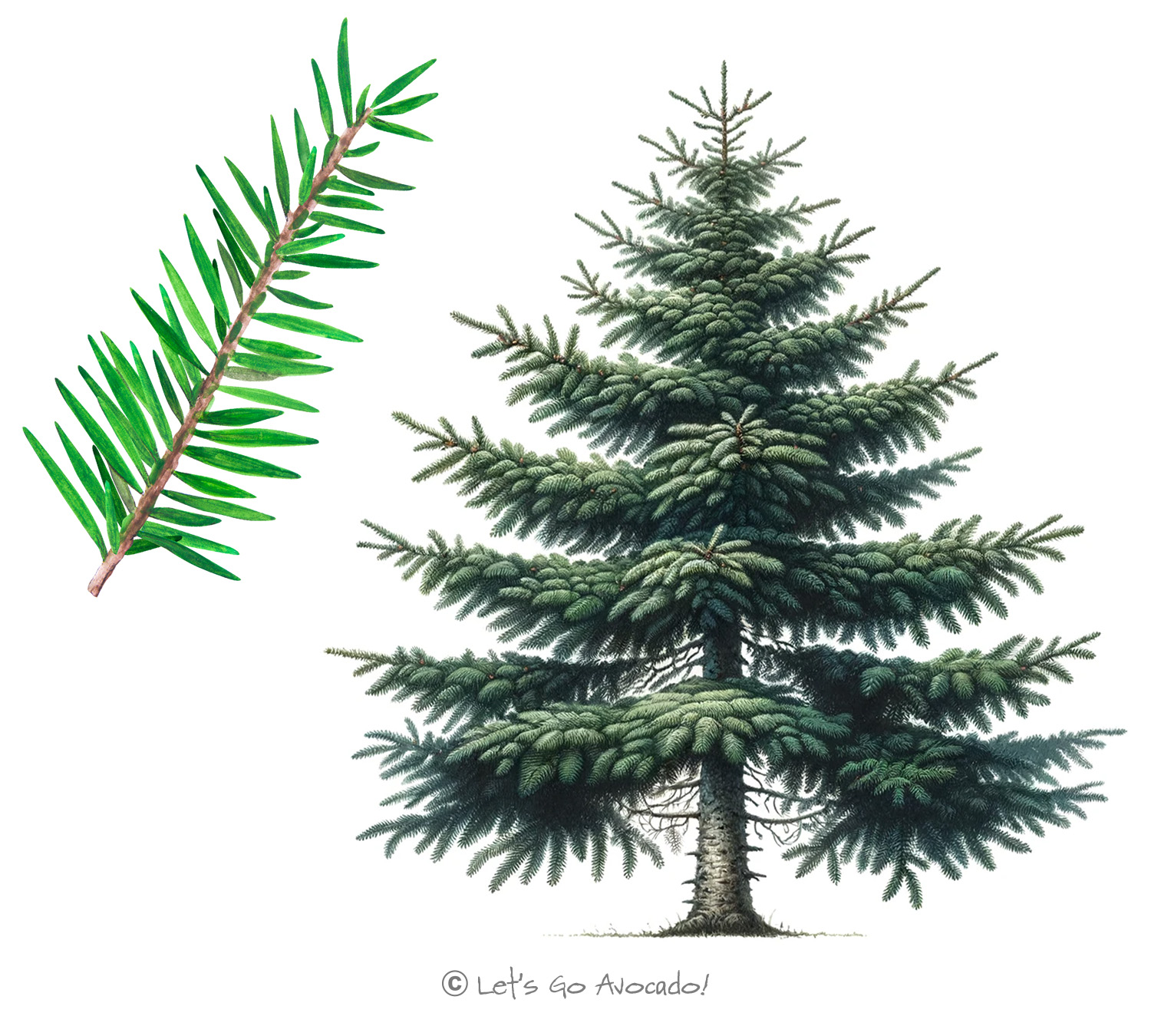The Canadian Hemlock Tree: A Forest’s Gentle Giant
Welcome, young explorers, to the enchanting world of the Canadian Hemlock tree, scientifically known as Tsuga canadensis. This evergreen conifer is a symbol of the cool, moist forests of eastern North America. With its delicate needles and graceful form, the Canadian Hemlock is more than just a tree; it’s a vital part of its ecosystemAn ecosystem is a community of living organisms, like insects and birds, and non-living components, like water and rocks, that interact with each other in a specific area. Learn More, playing a significant role in forest health and biodiversityBiodiversity refers to the variety of living things in an ecosystem. The more biodiversity there is in an ecosystem, the healthier and stronger it is. Learn More. So, let’s delve into the life and wonders of this gentle giant of the forest.
Identifying the Canadian Hemlock
Recognizing the Canadian Hemlock is an adventure in itself. This tree is adorned with fine, feathery needles that are short and soft, a deep green on top with two distinct white stripes underneath. The branches of the Canadian Hemlock droop gracefully, and its cones are small and delicate. Its bark is richly textured, ranging from gray to brown, adding character and beauty to the tree’s appearance.
Size and Growth: A Forest’s Pillar
In the realm of the forest, the Canadian Hemlock stands tall and proud. It can grow up to 70-100 feet (21-30 meters) tall, making it one of the larger trees in its native forests. The tree’s conical shape and dense foliage make it a prominent figure, providing ample shade and shelter within the forest canopy.
Lifecycle: Growth Amongst the Giants
The lifecycle of the Canadian Hemlock is a marvel of nature. The tree produces small, inconspicuous flowers, which are followed by tiny cones. These cones release seeds that are carried away by the wind, finding new homes in the moist, shaded soils of the forest floor. The Canadian Hemlock thrives in cool, shady areas and plays a crucial role in the forest’s understorey.
Ecological Role: A Keystone Species
The Canadian Hemlock is not just a tree; it’s a vital player in its ecosystem. Its dense canopy provides habitat for many bird species, and its needles and twigs are food for deer and other wildlife. The tree also plays a significant role in maintaining soil health and water quality in its forest home.
Challenges and Resilience
Despite its strength, the Canadian Hemlock faces threats such as the invasive hemlock woolly adelgid, which can damage and even kill these trees. Climate change also poses challenges to its habitat. However, the tree’s ability to grow in dense, shady areas helps it withstand many environmental stresses.
Human Connections: Beyond the Forest
The Canadian Hemlock has been valued by humans for various purposes. Its wood is used for construction and paper production, and the tree is popular in landscaping for its beauty and shade. Its presence in parks and gardens brings a touch of the wild, cool forests to our urban landscapes.
The Canadian Hemlock tree, with its elegant form and ecological importance, is a reminder of the quiet yet powerful presence of nature in our forests. As we explore the woodlands and come across these magnificent trees, let’s appreciate their role in sustaining the forest ecosystem. The Canadian Hemlock is not just a tree; it’s a key part of the forest’s life, supporting the wildlife and maintaining the delicate balance of its environment.
Each tree has its own story. Keep exploring, keep learning, and you’ll discover the myriad of stories that nature has to share.










